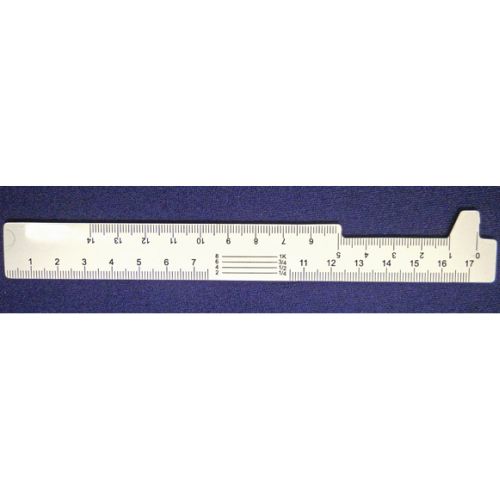

Our friend Oliver Kreylos offers these simple instructions, along with a more detailed breakdown. With a ruler and a mirror you can easily measure your IPD. Use a Mirror (accurate but you need a ruler)
PUPILLARY DISTANCE RULER DRIVERS
You’ll be asked to upload a photo of yourself holding any standard-sized magnetic strip card (ie: credit card or drivers license) which will be used to establish the correct scale for the measurement. This will work through your browser on your computer or smartphone. You can measure your IPD with a browser-based tool like this one from Ace & Tate. If you’re younger than 20 and it’s been more than a year since you saw the eye-doctor, you may want to get a check-up to make sure you have an up-to-date measurement. If you’ve been to one since you’ve reached your adult size, your doctor should have an accurate measurement on file give them a call and ask if they can provide your IPD measurement in millimeters. The most accurate IPD measurement you’ll be able to get is from an eye-doctor. If you don’t have access to one of the above devices for an automatic measurement, here’s other ways you can measure your IPD. Privé Revaux offers a wide selection of prescription glasses and readers that will help you see clearly and look great, too! You can browse our collection by lens size, lens type, style, color, and even face shape.Other Ways to Measure Your IPD Image courtesy Will Folsom ( CC BY 2.0) Once you have an accurate PD measurement (as well as your other prescription details), now comes the fun part: choosing your perfect glasses! That means that if you’re an adult, you most likely only need to obtain an accurate pupillary distance once. However, once a person reaches adulthood, very little change in skull shape occurs, causing the pupillary distance to remain constant. As such, a growing child’s PD measurement will likely change over the years. Pupillary distance changes with physical development. Can Your Pupillary Distance Change Over Time? If you only have a monocular PD, you can simply add the two numbers together to get your binocular PD. The first number is the right eye measurement and the second is the left.Ī monocular PD is often required when buying prescription multifocals, like progressives, but is usually unnecessary otherwise. Monocular PD is notated as 32/30, for example. The two numbers are measurements of the distances from the centers of each pupil to the center of the bridge of the nose. If two different PD numbers are listed on your prescription, this is referred to as a monocular PD. That is called a binocular PD, which can be used to order most prescription glasses.
PUPILLARY DISTANCE RULER HOW TO
How To Read Pupillary Distance on a Prescriptionĭo you already have a prescription from an optometrist? If so, pupillary distance is often included on your prescription, labeled as “PD.” However, if you don’t want to (or can’t) visit an optometrist, there are many ways to measure your pupillary distance at home yourself! Though not exact, these methods will get you somewhat close to what your actual PD is. These are the two most accurate ways to measure.

Or visit your local optical store - some opticians will measure it for you with a pupilometer, either at no cost or for a small fee. Just be sure to ask them to include the PD measurement on your prescription, as it’s not always automatically included. The best way to get an accurate pupillary distance measurement is by going to an optometrist for an eye exam. How Do You Measure Pupillary Distance At Home? Pupillary distance can vary widely-between about 51 mm and 74 mm for women and about 53 mm and 77 mm for men. This can result in effects like blurred vision, double vision, headaches, fatigue, and nausea.įor adults, the average pupillary distance is about 63 mm, but you don’t want to assume yours will be the same. Without correctly measuring your pupillary distance, you'll essentially be looking through the wrong part of the lenses. In other words, it ensures the prescription power aligns with the centers of your eyes. Knowing this measurement is essential when ordering a new pair of prescription glasses, as it determines where the optical centers on each lens should be placed. Pupillary distance (PD) is the space-measured in millimeters (mm)-from the center of one pupil to the center of the other.


 0 kommentar(er)
0 kommentar(er)
